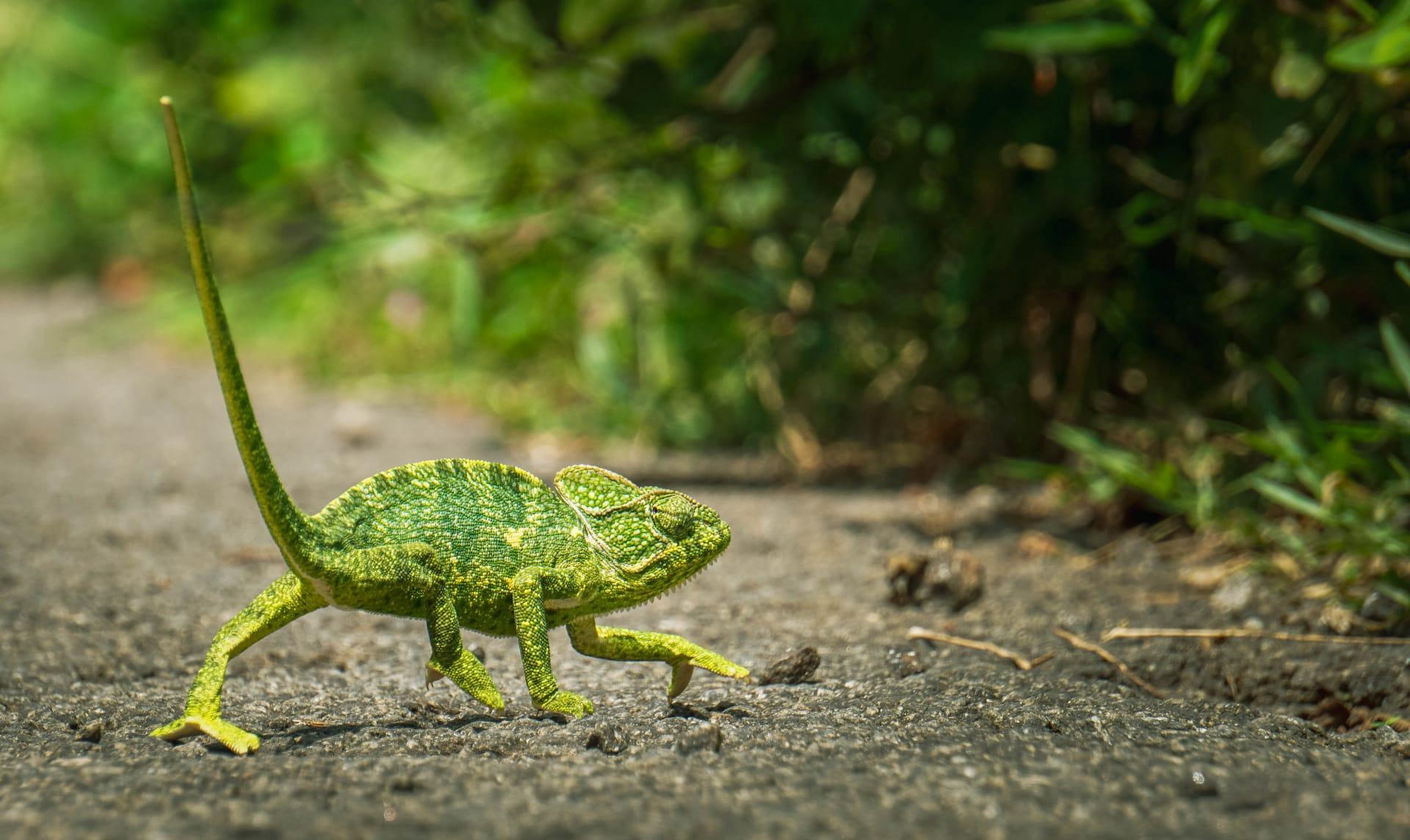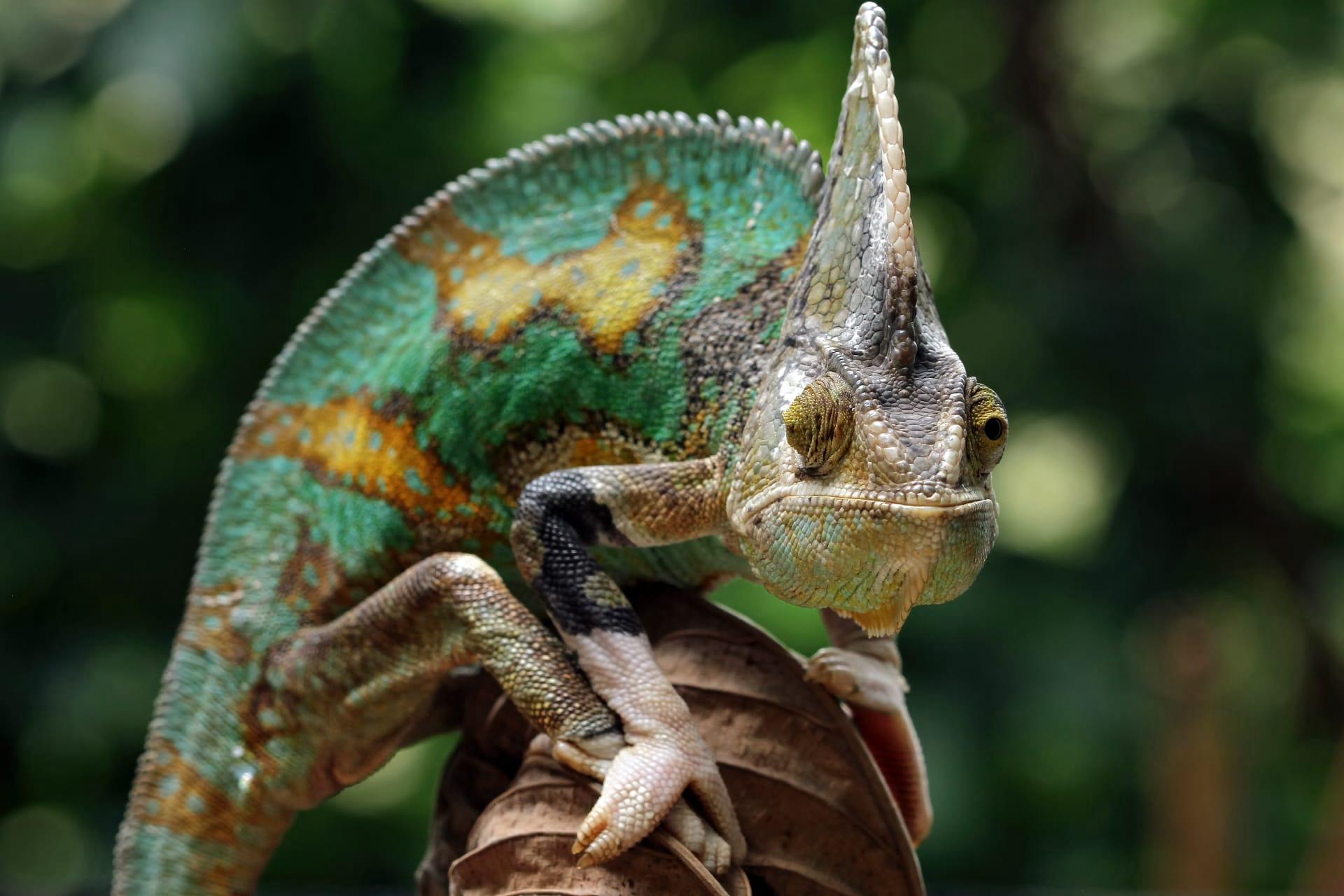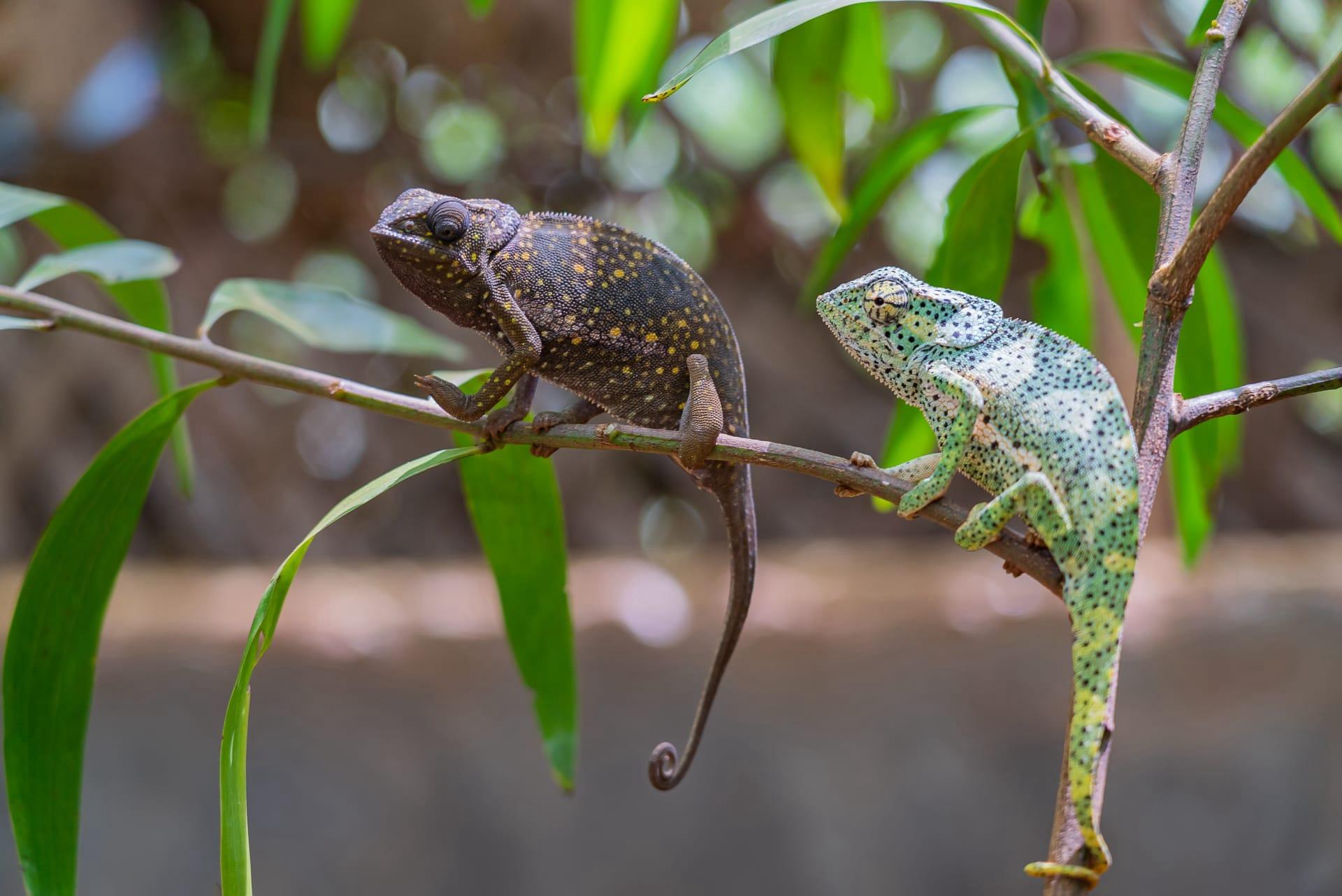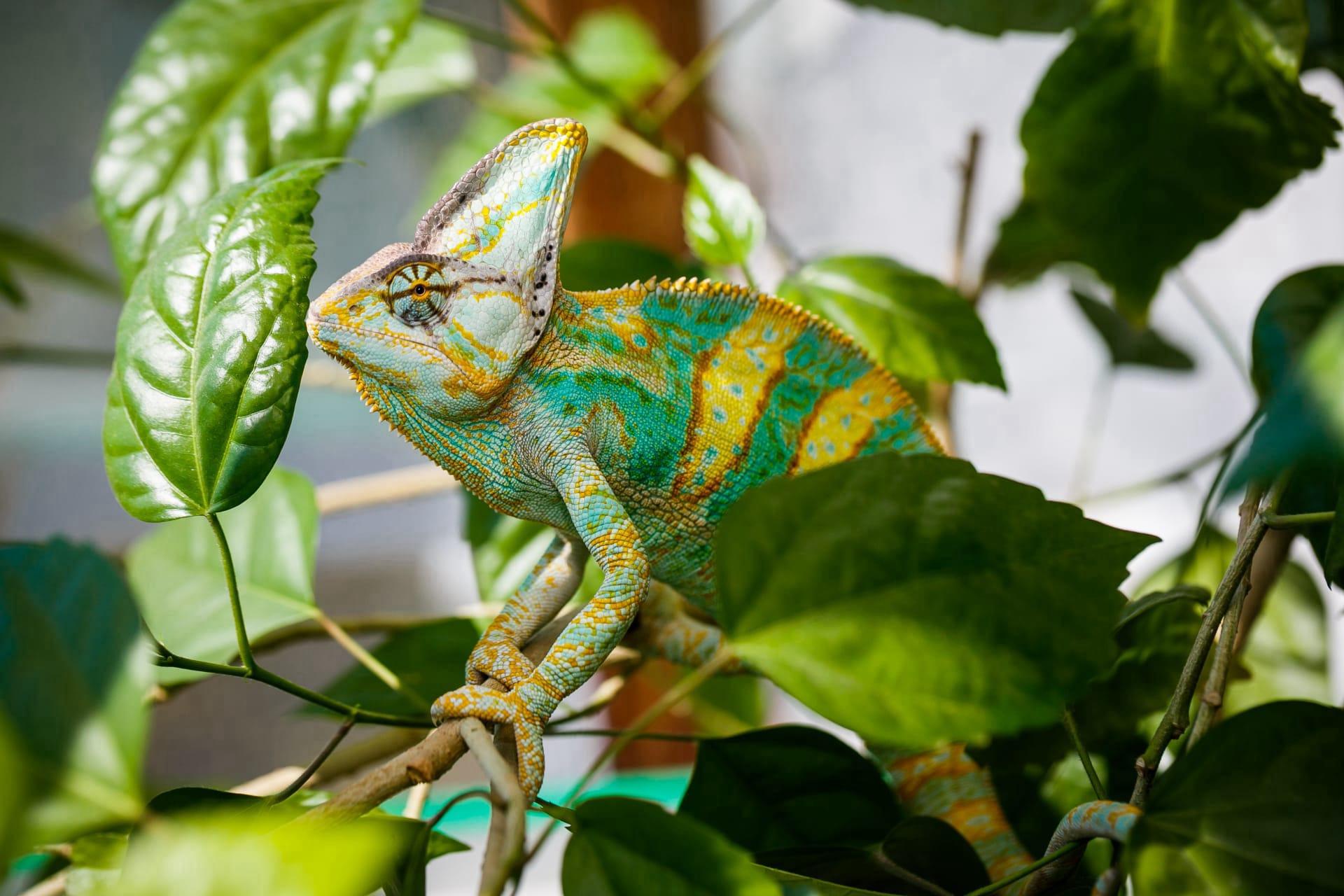Veiled Chameleon Characteristics
- Home /
- Mini Encyclopedia /
- Animal /
- Veiled Chameleon Characteristics
1
The Veiled Chameleon, scientifically known as Chamaeleo calyptratus, is a fascinating reptile with a range of intriguing physical characteristics. Adult veiled chameleons can grow quite large, with males reaching up to 24 inches in length, including their tail, while females are slightly smaller, typically around 14 inches. This size difference is a classic example of sexual dimorphism in reptiles. Their lifespan is another point of interest; in captivity, these chameleons can live for 6 to 8 years, with some even reaching the age of 10 with excellent care.
One of the most remarkable organs of the Veiled Chameleon is its tongue. This unique feature can extend up to twice the length of the chameleon's body. The tongue is a high-speed ballistic system, shooting out faster than the blink of an eye, typically in about 0.07 seconds. This rapid extension allows the chameleon to catch prey from a distance. At the tip, the tongue forms a muscular, sticky bulb that effectively snares insects and small vertebrates. The combination of speed, precision, and stickiness makes the tongue an incredibly effective tool for capturing food.

2
Question: Why do Veiled Chameleons change colors?
Answer: Contrary to popular belief, Veiled Chameleons don't primarily change color to blend into their surroundings. Instead, color change is a form of communication and a response to temperature. These chameleons display a range of colors, including greens, blues, yellows, and even black, to convey their mood, assert dominance, or show submission. For example, brighter colors often indicate excitement or aggression, while darker colors can signal stress or a response to cooler temperatures. This color-changing ability is due to specialized cells in their skin called chromatophores, which expand or contract to alter the chameleon's coloration.

3
The movement characteristics of the Veiled Chameleon are quite distinct. They are known for their slow, deliberate, and jerky movements. This movement style helps them blend into the swaying foliage of their environment, making them less detectable to predators and prey. Their feet are zygodactylous, meaning they have two toes pointing forward and two backward, which provides a strong grip on branches.
In terms of hunting, the Veiled Chameleon relies heavily on its keen eyesight and exceptional tongue. Their eyes can move independently, allowing them to have a 360-degree view of their surroundings. This ability enables them to spot potential prey without moving their body, maintaining their camouflage. Once prey is located, their lightning-fast tongue, which can accelerate at over 41 Gs, is used to capture it. Their diet primarily consists of insects, but they can occasionally consume leaves and other small vertebrates.

4
The Veiled Chameleon is native to the Arabian Peninsula, specifically Yemen and Saudi Arabia. They thrive in a range of habitats from coastal mountain slopes to plateaus and river valleys. These environments are characterized by significant temperature variations and low humidity. In their natural habitat, veiled chameleons prefer to stay in trees and bushes, often at altitudes between 500 and 1,500 meters.
Reproduction in Veiled Chameleons is quite unique. Females lay clutches of 20 to 70 eggs, and the frequency of laying can vary depending on environmental conditions. The incubation period for the eggs ranges from 6 to 9 months. Interestingly, the sex of the offspring is determined by the temperature at which the eggs are incubated. Higher temperatures tend to produce more males, while lower temperatures result in more females. This temperature-dependent sex determination is a fascinating aspect of their biology.

5
Book: "Chameleons: Nature's Hidden Jewels" by Petr Necas. This book, originating from the Czech Republic and published in the early 2000s, offers an in-depth look into the world of chameleons. Petr Necas, a renowned herpetologist, provides detailed information about various species, including the Veiled Chameleon. The book covers aspects like habitat, behavior, and captive care, making it a valuable resource for both enthusiasts and professionals.
Book: "The Chameleon Handbook" by Francois Le Berre. Published in France during the late 1990s, this book offers a comprehensive guide to chameleon care, including species-specific information on the Veiled Chameleon. Le Berre, an expert in herpetology, delves into topics such as feeding, housing, and health care, making this book an essential guide for anyone interested in keeping these unique reptiles as pets.